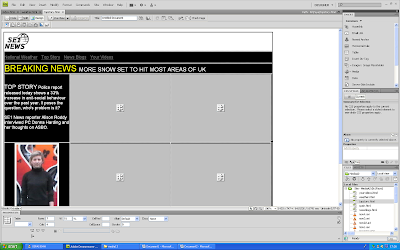Wednesday, 31 March 2010
Final Cut
http://www.youtube.com/user/lmason01#p/a/u/0/cJIKeIYicTI
Evaluation 4
 Once we had got permission to use ITV's theme tune we downloaded the clip and added it to Premiere. We got the theme tune clip off of a website which I mentioned earlier in my blog. We opened up Premiere and placed song into the file list. We did this for all the media files that we wanted to add to the project. When all the files were ready to be placed into the time line they all appeared in the file list on left.
Once we had got permission to use ITV's theme tune we downloaded the clip and added it to Premiere. We got the theme tune clip off of a website which I mentioned earlier in my blog. We opened up Premiere and placed song into the file list. We did this for all the media files that we wanted to add to the project. When all the files were ready to be placed into the time line they all appeared in the file list on left.We then added the media we wanted into the time line this began the process of creating the actual video. 
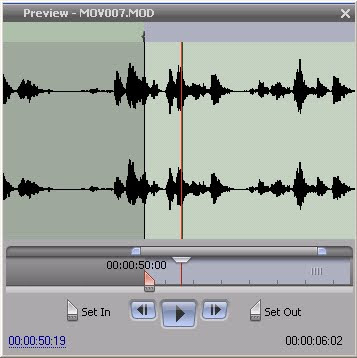
When we selected the sound and part of the clips that we wanted we used the set in and set out tools. These can be clearly shown in the screen shot. When the clip is set in that is the starting point and when it is set out that is where the clip ends.

-Edit fonts
-Edit colour schemes/produce colour schemes
-Create internal and external links
-Change background colours
-Change border sizes
-Change images and video sizes
-Change the alignment of the content in the cells.
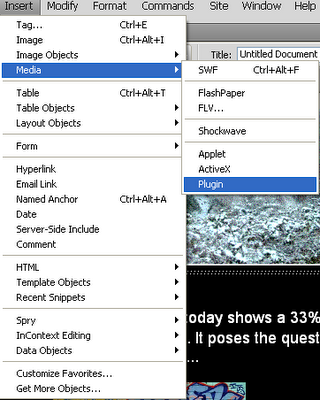
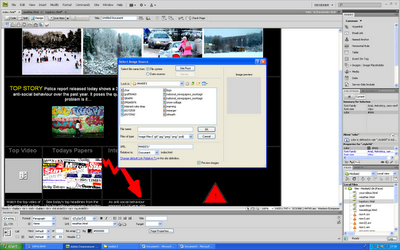
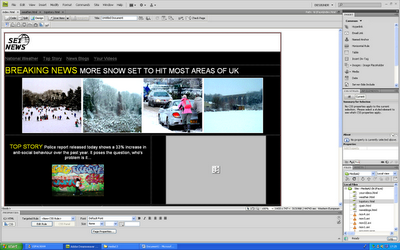
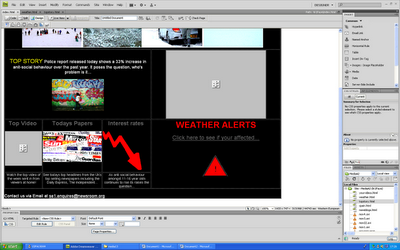
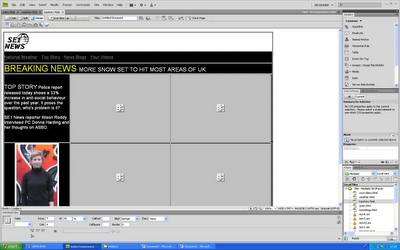
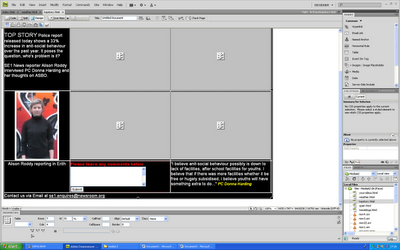
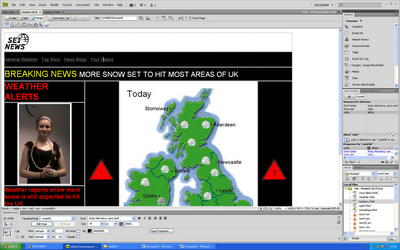
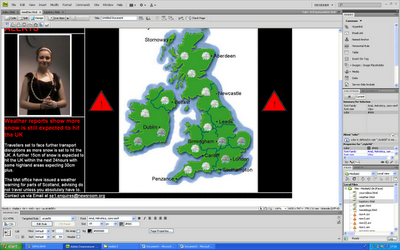
CONCLUSION
Evaluation 1
During this task we have aimed to develop a project which resembles a real media product. Throughout the project I feel that we have developed not challenged forms and conventions of real life media products. The final product we produced holds the same features and content of that of a real news programme. We chose to develop the conventions of real life media products instead of challenge them as we did not have much of an idea in how we could challenge the forms and conventions of news programmes. Although if we had set our sights from the start that we were going to challenge the forms then maybe we could have come up with an interesting idea. However we decided to stick to what we knew as we felt that the end product would be a more realistic media product.
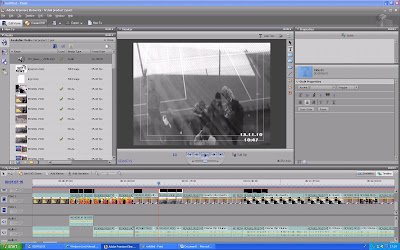
In this shot we did not have any music or other sound being played, just PC Donna Harding’s voice in her interview and James Heaths voice in his interview. The lighting in the room was natural as it was filmed during the day so the rooms which the interviews were filmed in were bright. When positioning the camera we made sure that any natural light coming in from the windows did not affect the shot quality as light shone in and hit the camera lens. Mise-en scene wise we did not need any extra props in these shots. We wanted a natural interview with them both in their place of work. So in PC Donna Harding’s shots it was just her sat on a chair in an interview room in Belvadere Police Station. With James it was just him again sat on a chair in his office.
From the clips we took of PC Donna Harding and James Heath not much editing was required. All that we needed to do was cut the clips using the set in and set out tools to the part of the clip we wanted to use. When we edited the footage we cut out quite a lot of the interviews as both of them kept saying ‘erm’ which we felt did not look professional. Although we wanted the interviews to look natural, the consistency in which they kept saying ‘erm’ looked too natural. Also when we put all out video together we decided that we would use some cut a ways during the interviews which related to what they were talking about. We did this to split up the interview and kept the viewer interested in the content. We did this by selecting the clip we wanted to place the cut away on and unlinked the sound and the visual clip. We cut down the visual clip to the length we wanted using the set in and set out tools and placed the cut away clip in. We left the sound as it was on the sound line in Premier so that when the cut away was shown the interviewees voice played over the clip.

In this shot we did not have any music or other sound being played, just Runi’s voice (however at the very beginning of the clip we edited in the end part of the theme tune, cutting from the title sequence). After looking at the conventions of real news programmes it became apparent that they all use progressive verbs to continue a description but keep a level of here and now journalism. ‘More heavy snow set to hit the UK within the next 24 hours’. The lighting in the room was quite hard to get right as we were filming the interactive white board. We needed to be able to see Runi but did not want the light reflecting off of the board. We controlled the light in the room using the various switches which controlled different sets of lights in the room. We turned off all the immediate ones which reflected off the board and so that the only ones on highlighted Runi.natural as it was filmed during the day so the rooms which the interviews were filmed in were bright. Mise-en scene wise we needed a desk, some papers, the backdrop and an interactive white board. These were easy to come by and were similar props to those used in News studios.
From the clip we took of Runi not much editing was required. All that we needed to do was cut the clip using the set in and set out tools to the part of the clip we wanted to use. When we edited the footage we only cut out the bits where she ‘messed up’ or there was a too long pause. The only other part we edited was the theme tune so that the end music from the title sequence overlapped slightly onto the beginning of Runi’s clip introducing the report. This was easily done by moving the sound clip along on the sound bar in Premier. We then faded the sound into Runi’s clip so you could slightly hear the theme tune in the background, used in real news programmes. Using the opacity bar on the clip we pulled it down were we wanted it to fade to quiet.
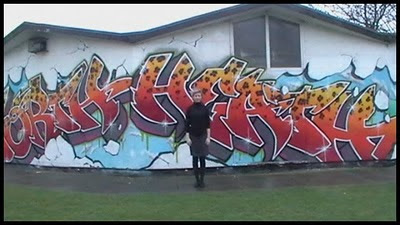
Camera work – When filming Alison we needed the shots to look professional as she was doing a report on ASBO. In this clip she is filmed ending her report. The camera was placed on the tripod to get a professional, still shot. To get her emotion from the story we zoomed in on her as she used formulaic constructions. ‘Alison Roddy. Reporting from Erith. Back to the studio.’ This convention is widely used in news programmes all over the world. To produce a real life media product we added this in to give a professional look.
In this shot we did not have any music or other sound being played, just Alison’s voice. As Alison was filmed outside by the graffiti in natural light, we did not need to control the lighting. We just made sure that there was no light reflecting onto the camera lens. Mise-en scene wise all we needed was the graffiti wall to aid what Alison was talking about.
From the clip we took of Alison not much editing was required. All that we needed to do was cut the clip using the set in and set out tools to the part of the clip we wanted to use. When we edited the footage we only cut out the bits where she ‘messed up’ or there was a too long pause. This was all the editing done on this particular clip.
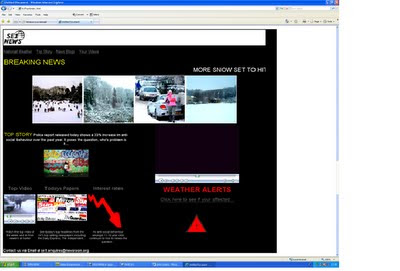
When creating the website we wanted to develop the conventions and forms of real media products. I produced the website so that it resembled that of the ones I analysed in my research. All of the websites looked at focused on some form of a top story which I displayed in our website. I placed the top story on the main menu and also on a separate page. The conventions of real media products which I looked at were taken into consideration and used in my final product. All the websites used images and videos to make the site look interesting and also to give imagery information as well as written. Also on the top story page I have allowed the users to add any comments which are also widely used in real life products.

Evaluation 3
In one point the music is too loud and the reporter can not be heard correctly.
Comment 3:
It followed the conventions of a news report so looked professional and believable. Use of different ethnic people showed that there was multi-culture.

Here is a print screen of the questionnaire I produced asking for feedback on the website.
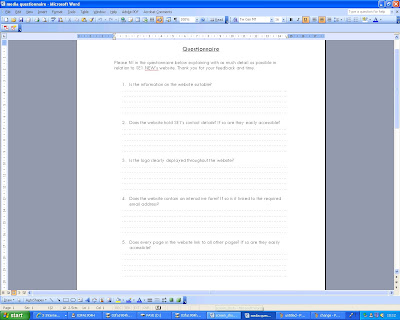
Saturday, 27 March 2010
Evaluation 2
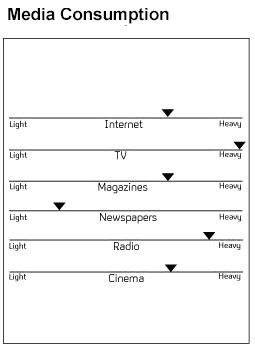
The news programme
After doing our research we had a clear idea of what we wanted our news programme to be about. With the media focusing on the downfall of youth behaviour we thought that this would be an interesting topic. As not all of the younger generation are involved in anti-social behaviour we wanted to high light this in our product. Also with the changing trends we wanted to produce a product which related to real life situations which is a ‘real’ news programmes purpose. Also producing a weather report which highlighted the bad weather that hit the UK in December/January also applied to real life situations included in real media products.
With producing the news programme it was not just simply selecting a song and producing a video to go with it, a lot of research needed to be done to produce the correct narrative for the product. As I watch the news regularly to keep up with the latest stories, I had a good idea of the narrative that was used. The narrative used in the researched news programmes is carefully selected to add suspense on the top stories which are going to be discussed. One clip I looked at during my research showed how the narrative is carefully selected to draw the viewer in; ‘the ultimate sacrifice’. Those two words add drama and suspense to the topic which is going to be discussed straight away. The words are harsh and bold in the sentence drawing the viewer in. We wanted our product to be as ‘real’ as possible targeting the news audience. As people get older they become more interested and concerned with what is happening in the media. When I was younger I did not watch the news as I was to naive to realise the serious topics discussed in the news, however now that seriousness is effectively portrayed in the media.
After doing my research it provided me with a clear idea of the colour, fonts, texts, images and sound that should be used to create a real media product. When selecting the theme tune for our news programme we both decided that we would use ITV’s music. The beat in the music creates a serious tone for the topics which are going to be discussed. The loud trumpet noises set a harsh tone and draw the viewer in again adding to the seriousness of the topics. As the main topic that was going to be discussed in our product was a serious issue that more of society need to address we wanted music to address this.
Also during our research sad stories such as Rhys Jones of whom was shot by a group of teenagers who were caught up in gang culture. We thought doing a story on anti-social behaviour would allow us to look at what could be done to prevent or high light why this was happening and in fact who was to blame. Looking at what could be done may even provide the real world with suggestions on what could actually be done for trouble youths. I feel that the topics we chose to include in our product could potentially have an effect on real life and maybe provide answers to the real world.
Title Sequence
With the news programme we produced a title sequence, again with the changing trends we wanted to produce a sequence that was ‘up to date’. When doing my research I looked out how ITV did a complete revamp of their title sequence. They went from the old focus on Big Ben to a high tech title sequence involving a range of media. I really liked how ITV had taken a risk and completely changed their title sequence and we decided that we wanted to produce a product with similar qualities. We wanted to combine the old title sequence features with the new revamped sequence. So we decided that we would start with a focus on our version of Big Ben and then combine the new sequence features which would involve a range of different shots related to the topics mentioned in the news programme. To make sure there was a clear link between our three products we made sure that the clips in the title sequence related to the news programme. We used the CCTV footage clip again during the actual news programme and placed a shot our main focus; the clock, at the end of the sequence. This allowed the viewer to have a clear link with the two products.
For the website I looked at different news websites to get an idea of what we should include, content wise. A clear feature was that the main topics mentioned in the actual news programme were then linked on the website also as main stories, being displayed on the main page. Again as we wanted to produce real life products we took these ideas on board and produced a website with real life qualities. To make sure that there was a clear link between all three products we used SE1 NEWS’ logo on all three. This provided a brand image for the three products produced. We decided that we would have our top story mentioned in the news programme as the main feature on the website, placing it on the main page. The font used throughout the researched websites was simple and easy to read allowing the imagery to do ‘the talking’. However although a wide range of imagery was used in each of the websites the stories covered were very informative appealing to the target audience. The images I used in the website related to the chosen topics discussed and also had a link with the other two tasks. For example in the title sequence there is a shot of newspapers being dropped onto a table representing the story ‘today’s papers’, on the website I placed this story title and an image of different newspapers displaying a clear link. Also to create this ‘brand image’ we used a set colour scheme throughout allowing the viewer to relate to all three products. The yellow, black, white and elements of red that we used were features in all three of the products aiding us to creating a brand image.
Due to this brand image that I feel we created through our three products, they work very well together. The viewer can easily relate between the three products and real life issues are covered in each. However there is always room for improvements, if I had an opportunity to produce the products again I would change several things to improve the project overall. The main feature that I would change would be the website as there are an endless number of features which can be added, but there simply was not the time. Although I feel that the website looks professional, the features used are quite simple, more hot spots could have been used providing the audience with extra information and also maybe adding more text to the stories. Also in the title sequence I feel that if I could make it again I would cut out the graph shot as I feel it is not as of good quality as the other shots in the sequence. Although it represents the interest rates story I feel a better shot could be taken to present this story in a better light.
Overall I really like how we managed to keep good links between the three tasks. The logo, colour scheme and font styles were used in each and created a successful brand image. I also really like the cut a way’s during the interviews as they make the clips look more interesting and provide visual information for what is being discussed. I am generally very pleased with the final news programme which we produced.
Thursday, 25 March 2010
Print screens of website
Weather page.

Top story page.

Home page.
Here is our final website. The bottom screen shot is of the main menu which links to the weather and the top story page. All the pages link with each, images, videos, texts, rollover images, master style and company logo have all been used. I am very pleased with the final product I feel it is of good professional quality and successfully adds to the brand image.
Friday, 19 March 2010
Wednesday, 17 March 2010
Slides for filming
Here is the slide I produced to be used as the back drop for the news presenter scenes, then onto the weather report and then onto the end credits.
Wednesday, 10 March 2010
NEED FOR CHANGE!
Tuesday, 23 February 2010
PROBLEMS
Things went from bad to worse; we had 6 or 7 chairs stacked up on top of each other with Lauren underneath the desk holding it up in the shot while I sorted out the camera and slide show. This was quite time consuming figuring out how we were going to sort the problem but eventually we got it filmed.


Here are some images of the chaos caused.
PROBLEM
Another problem that we had was that the news programme was too short. As the brief required the programme to be 5 minutes long we were just under 30 seconds short. We decided that we would do an interview with a 'troubled neighbour' discussing her run ins with ASBO.
Wednesday, 17 February 2010
Construction of the website

In constructing the website this properties tool bar was the main tool bar which was used. The tool bar allowed me to:

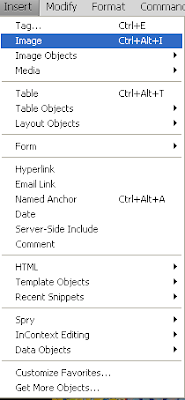
Thursday, 11 February 2010
Target Audience
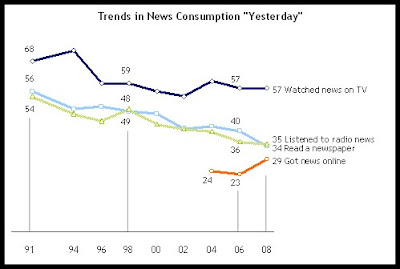
The total time that people spend with the news is largely unchanged from a decade ago.There is a consistently large gap in the time spent on the news by age. People who are younger than 30 spend just 46 minutes with the news on a typical day, comparing to 63 minutes on average among people in their 30s, and higher averages for the older age groups.
This age gap is based on the fact that younger people are much less likely to watch television news on a typical day. However, even when younger people do get the news they spend less time with these sources than do older people. Overall, those younger than 30 who get news on a typical day spend 65 minutes with the news on average. This is a substantial difference than the average for o lder news consumers.
lder news consumers.
TARGET GROUP OVER 30's
Thursday, 4 February 2010
Filming the interviews
Today we went and filmed the youth worker and the PC. We got several different shots which we are now going to add to Premiere to cut down the clips. Some of the content mentioned by the interviewees was of good quality however at times there were a lot of 'erms' which need to be cut out. As all together the interviews combined time is over 5 minutes so we need to cut the clips down that we are going to use and see which clips look most effective.
Tuesday, 2 February 2010
Todays Filming Session
In today's filming session we went and filmed Bexleyheath clock tower which was SE1's 'Big Ben'. Some of the clip is not of very good quality but we decided that we would cut those parts out in Premiere. After doing some initial research here is the clip we got the idea of combining a clock in our title sequence from. I liked how we are provided with an overview of London, not seen before by many and then we come to focus on Big Ben symbolising the start of the News at 10.
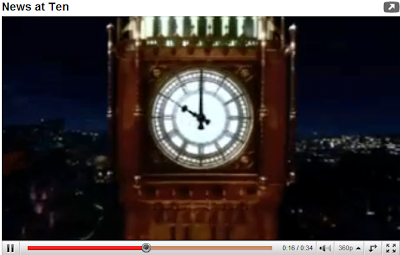
Sunday, 31 January 2010
News Conventions
- News presenters nowadays use strings of sub-sentences rather than longer complex ones.
- Introductory Headlines - The use of brief phrases introduce the top stories of the night.
- Questions can sometimes follow a story headline to arouse the interest of the audience.
- Formulaic Constructions - These introductory and concluding announcements which consist of the reporter's name, location, station, date..
- Anchors or reporters will often finish their introductions or conclusions to a story by referring to the other person/presenter by name.
- Progressive Verbs - Used to continue a description while maintaining a certain level of action-packed, here and now journalism.
Monday, 25 January 2010
Colour scheme for website
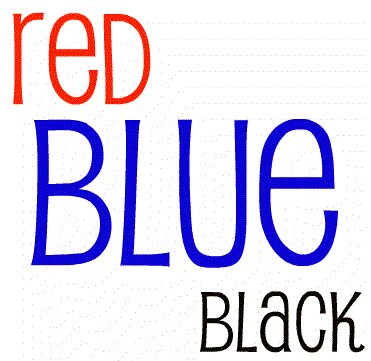 Here is SKY NEWS colour scheme which they use throughout their website and during the actual programme.
Here is SKY NEWS colour scheme which they use throughout their website and during the actual programme.For our colour scheme we decided that we wanted a simple colour scheme but was effective in being recognised in the brand image. All the colour schemes above are simple but the colours chosen work well together and give them a brand image. We decided that we were going to have a main colour scheme of black and white, with elements of red and yellow in places. The style is simple but will hopefully be effective in appealing to the target audience.















